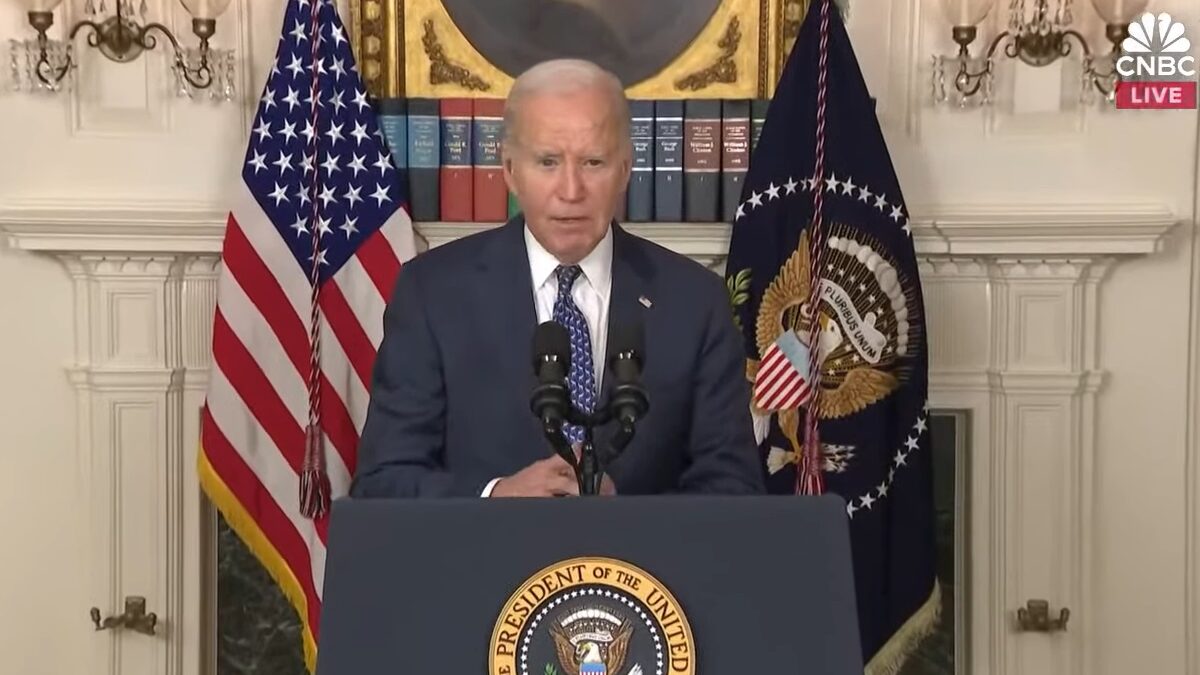The U.S. consumer price index (CPI) in March was 8.5 percent higher than a year earlier, the highest “inflation” figure since the early 1980s. For a typical family, it now takes an additional $5,000 to buy the same stuff from a couple of years ago. Higher prices account for $3,500 of this, and $1,500 from higher taxes paid on income.
What’s going on here? Is it a problem? What is the solution?
Unfortunately, economists’ track record at diagnosing and resolving “inflation” problems over the past 70 years or so has been very bad.
I put the word “inflation” in quotes because the term does not have an exact meaning. It arises from popular speech and has something to do with higher prices. From here, we should break down the possible factors into monetary factors, and nonmonetary factors. Both are at work today.
What’s Causing Today’s Inflation
“Non-monetary” factors are all the supply-demand-type issues that we can clearly see today. Much of the rise in the CPI comes from used car prices, which have soared due to shortages of new cars on dealers’ lots. A variety of similar supply-chain issues have left store shelves bare of a wide range of items. Government restrictions on housing development have created housing shortages in popular cities.
“Monetary” factors are basically due to central bank policy. Since 1971, when the United States and the rest of the world left the Bretton Woods gold standard system, we have lived in an environment of floating fiat currencies.
In the short term, the value of these currencies goes up and down somewhat unpredictably. In the longer term, there is a clear trend: The value of currencies goes down. A lot.
Today, the value of the dollar is, by my estimate, about one-fiftieth of what it was in the 1960s. Basically, we have a two-cent dollar.
In 2020, in response to the Covid virus, governments around the world spent spectacular amounts of money. The U.S. federal government ran a deficit of 15 percent of GDP, the highest in peacetime. This was largely financed by central banks.
The Federal Reserve increased the monetary base by about $2.5 trillion, from $3.5 trillion in 2019 to $6.0 trillion in 2021. Not surprisingly, this dramatic increase in the amount of dollars in existence led to another decline in the dollar’s value.
The combination of both these nonmonetary supply-demand issues, and the monetary effects, is today producing the highest CPI readings in decades.
Inflation Is a Decline in Currency Value
Economist John Maynard Keynes once said “not one man in a million“ is able to decipher this monetary type of inflation. But, it is easy to understand as simply a decline in currency value.
In the early 1990s, the Mexican peso was worth about $0.30 on the foreign exchange market. If you took a vacation in Cancun and ordered a $5 beer, it cost about 17 pesos. Today, the peso is worth about $0.05. If you go to the same bar and get a $5 beer today, it costs about 100 pesos. The peso price went up six times. The reason for this is obvious to everyone.
But when the same thing happens to Americans—our floating fiat currency declines in value, just like Mexico’s—we are confused. We assume the value of the dollar is stable, even when it is not.
This is known as the “money illusion.” When currencies decline in value, the real value of wages paid in that currency declines. The value of assets denominated in that currency decline—particularly debt assets, such as bonds and savings accounts. People get poorer.
How Not to Solve Inflation
As a general principle, if “inflation” is bad, then fixing “inflation” should be a good thing, right? Today, resolving the various supply-chain issues, and stabilizing the value of the dollar, should produce an economic advantage. Things should get better, not worse.
Unfortunately, the idea now bubbling up is that the solution to today’s “inflation” is: More unemployment. In other words, a recession.
Think about it. If supply-chain-type issues or government housing development restrictions are causing problems, how is more unemployment supposed to fix that? The basic idea is that, if you don’t have a job, then you can’t buy stuff, so the empty store shelves become less relevant, and you have to abandon your homeownership goals and maybe move in with a friend. This is the “recession to break the back of inflation” idea.
If there were a decline in the value of the currency, how does more unemployment make that better? The problem was caused by the central bank, not people working.
Today, it seems like Wall Street is already smelling the next recession. And when there is a recession, we have been trained to expect giant government spending, plus “easy money” central bank policies including outright money-printing. This is even being swirled together into “modern monetary theory,” which will make a lot of sense to politicians if there is a downturn during the next election cycle.
At the same time, supply-chain-type issues—now including important basics like fertilizer—which usually resolve themselves pretty quickly, instead seem to be getting worse. A new round of “lockdowns” in China means more shortages in the United States for a wide variety of items.
This looks like three-wrongs-don’t-make-a-right: More unemployment, followed by more “easy money,” and continuing supply-chain problems. If Washington tries the “print-and-spend-money” solution again, the outcome could be very nasty.
How to Solve Inflation for Real
The solution to “monetary inflation” is simply to stabilize the value of the currency. You don’t need high interest rates, and you don’t need a recession.
For most of U.S. history, the nearly two centuries before 1971, this was accomplished via the gold standard system. The value of the dollar was linked to gold.
This basic idea is still common today, among the many countries that link the value of their currencies to the dollar or euro. These countries found that having their own floating fiat currency (think Mexico) didn’t work out so well. They needed something more reliable and less political.
In the end, we really have only two options: the gold standard, or the “PhD standard.” We either put our faith in gold, or we put our faith in a floating fiat currency run by eggheads with PhDs. We used to put our faith in gold, and after nearly 200 years, ended up the wealthiest country in the history of the world. The final decade of the gold standard era—the 1960s—was possibly the best since 1914.
The PhD standard can be tolerable for a while, but the long-term trends are clear: a pattern of artificial boom and bust, accompanied by a long, slow (or sometimes short, fast) decline in currency value. One of them always works, and one of them never works. If we have to learn this lesson again, let’s learn it quickly.









